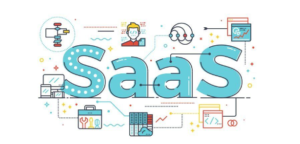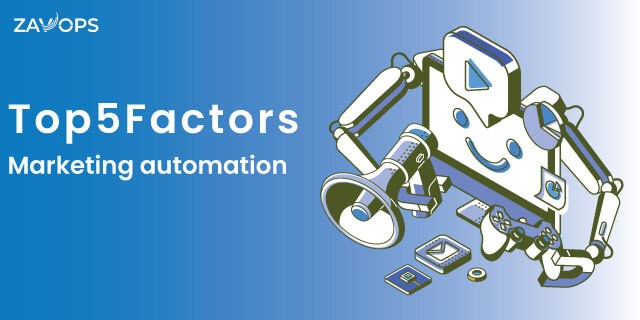Top 5 Steps To Build Your Marketing Automation Implementation Strategy
Introduction
So you’re starting your journey with marketing automation! While doing some research you may have come across marketing automation implementation strategy and some software offers in which their providers say how much easier life at your company will become immediately after you have integrated marketing automation in your Martech stack.
Like a magic wand, a marketing automation platform is said to solve all your operational problems, take the heat from your overwhelmed marketing specialists, generate high-quality leads when you sleep and, most of all, let you earn more money. We surely don’t want our blog to damp your enthusiasm down as we strongly believe that marketing automation platforms are amazing. And with a proper marketing automation consultant who understands your martech stack and your marketing objectives and a proper marketing automation implementation strategy, you can surely get enormous success.
But let’s face a few facts!
First, have a full proof plan!
If you want to successfully use marketing automation, though, it’s important to have a plan in place from the start.
Automating random tasks without a plan might let you jump into the action right away, but you won’t reap the same rewards as you would from a comprehensive strategy. Sitting down to craft a marketing automation implementation strategy and plan an initially take a bit of time, but you’ll get more results from your upfront efforts, and you’ll save time and money in the long run.
Let’s take a look at how you can create a comprehensive and holistic plan!
If you have already identified that it is time to change and automate your marketing processes and communications to catapult business, we suggest that you take into account the stages that are part of the PDCA continuous improvement cycle (Plan, Do, Check , Act), which will allow you to implement marketing automation in your company.
For creating a winning marketing automation implementation strategy, at first you need to know that every user that enters the sales funnel can be categorized into one of the following seven categories:
Awareness – Users who are aware of your brand but are not ready to transact.
Interest – Users who are interested in a product category and are in the initial phases of gathering information.
Consideration – Users who are comparing products, visiting multiple sites, benchmarking prices, and trying to find the best fit for their needs.
Purchase – Your pool of customers who make a transaction on your website/app.
Retention – Customers you’ve managed to retain and have repurchased from your brand.
Advocacy – Customers who talk positively about your brand. These may even include customers who’ve only purchased once from you but are happy with the experience you’ve provided them.
Loyalty – These are customers who’ve repurchased from you and also speak highly about your brand.
While designing your marketing automation implementation strategy, your end goal is to move your customers from the awareness stage to the loyalty stage. Marketing automation can help you move more users from one stage to another.
If you’re looking to implement automation in your business now, here are some advanced marketing automation implementation strategy to help:
Top 5 Steps To Build Your Marketing Automation Implementation Strategy
- Use well-timed email automation to send enticing offers
If someone opts in to your email list because they’re legitimately interested, these are the first people you should be sending automated campaigns to. If you’re not already sending messages to people who have explicitly said “I like you and what you do and I want to hear from you,” that is a gap you should be filing with automation.
If you have qualified leads, automation will help you close the sale. If you run an online store an ecommerce marketing automation platform can triger cCoupons or other increasingly better offers that are hard to ignore, especially if a user’s digital footprint is giving all the tell tale signs of a purchase intent.
- Don’t underestimate the amount of content the business will need
Marketing automation is powered by content. A lot of content is necessary to start the automation process, and the business will keep producing more. Just gathering existing content to bring up the new system is daunting, as business leaders will need to review it for timeliness and relevance. Once that’s done, a strategy for content production is necessary, ensuring that the system has as much new content that it will require moving forward.
Businesses will need to determine the volume and rate of production, and organizations’ analytics people will need to monitor content effectiveness with customers to determine which content is delivering. That’s one of the smartest marketing automation implementation strategies.
- Micro-segment your audience for a targeted communication approach
Not all your users will be interested in the same products. And one of the quickest ways to lose a customer is to flood their inbox with unrelated and unwanted emails. For example, you might not want to send an on-ground/offline event invitation to a subscriber who lives six states away. So, to avoid those situations, you should segment your user base.
Segmenting is clustering your audience into strategic, separate, and smaller groups. It helps you collect more information on your users, and increases their retention by catering to their specific needs. Commonly, customers are segmented by:
- Demographic information
- Geographical information
- Past buying behavior
- Engagement level
Manually, combing through each customer would be a lot of work. But with marketing automation implementation strategy, segmentation can be done easily, in real-time, with live segmentation. You can pull in various user attributes and create segments that best fit the objective of your campaigns.
- Develop design templates
When you’re communicating across channels, it’s important to make sure that your corporate image and house style are reflected at all times. An important part of the initial marketing automation implementation strategy is to develop the different templates you’ll be using in the application for frictionless deployment.
You can use this step consequently for two distinct purposes:
- To challenge the current house style(s) and see where you can refresh them or make them stronger. We recommend revisiting your house style at least once a year to check and – if necessary – update the designs.
- To make sure the house style is consistently applied across the different channels.
- Deliver a hyper-personalized user experience
And lastly, make sure that your content is unique for every user. Personalize your communications with information that resonates best with the user. Factors like personalized product recommendations, reminders, offers and updates, increase the conversion rates by 3x over messages that just include the first & last name personalization.
Create communication rules and let your marketing automation platform take the center stage. A marketing automation platform can not only fetch information from your recommendation engine and your data systems but also smartly insert them into your communications so that every customer communication is unique and tailor-made.
You can also version-test your campaigns to identify which variation of your campaign works and which doesn’t.
Summary
Successful marketing automation implementation strategy has a flexible formula. The steps outlined in this blog will give you a base from which to work, and guidance for where to focus. Of course, each technology has its own nuances, but the principles of preparation don’t change.
Above all, marketing automation must be implemented with a considered approach, carefully documented and organised with a long-term perspective in mind. An automation project is also the ideal time to revisit data health, audience targeting, and buyer journey – elements that might otherwise be left alone for too long. In order for automation to scale your growth and enhance your return on investment, the setup must be right.












